Assimilation vs Accommodation
Discover Jean Piaget's theory of assimilation and accommodation. Learn how these processes shape a child's intellectual growth and understanding of their environment.


Discover Jean Piaget's theory of assimilation and accommodation. Learn how these processes shape a child's intellectual growth and understanding of their environment.
Assimilation and accommodation are two key ideas from Jean Piaget's theory of how children learn. These two processes explain how we take in new information and make sense of the world around us.
Assimilation happens when we fit new information into what we already know. Think of it like adding a new book to an existing shelf. The new book fits in with what is already there.
Accommodation happens when we change what we already know to fit new information. This is like building a new shelf because the old one cannot hold the new book. We have to adjust our thinking.
Both processes work together to help us learn and grow. Understanding how they work can help teachers support child development in the classroom.
Assimilation is how we take in new information and connect it to our existing knowledge. When children learn something new that fits with what they already understand, they are using assimilation.
For example, a child who knows what a dog is might see a new breed and still call it a dog. They have fitted this new animal into their existing idea of what dogs look like.
This process helps us make sense of new experiences quickly. We use what we already know as a starting point. This makes learning faster because we do not have to start from scratch every time.
Assimilation helps children build on their existing schemas. A schema is a mental framework that helps us organise and understand information. The more we learn, the stronger our schemas become.
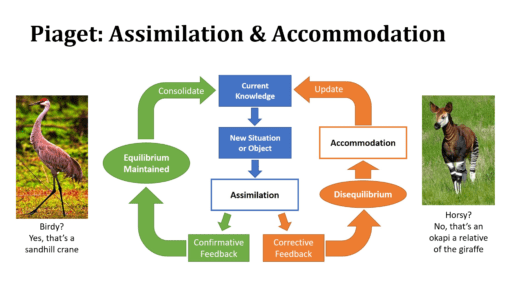
Accommodation is what happens when new information does not fit into our existing knowledge. We have to change our thinking to make room for new ideas.
For example, a child who thinks all four-legged animals are dogs might see a cat. When they learn it is not a dog, they must create a new category in their mind. This is accommodation.
Accommodation takes more effort than assimilation. It requires us to rethink what we thought we knew. But this process is key to learning complex ideas and correcting mistakes in our understanding.
Both assimilation and accommodation work together. As children grow, they constantly shift between these two processes. This helps them build more accurate and detailed mental models of the world.
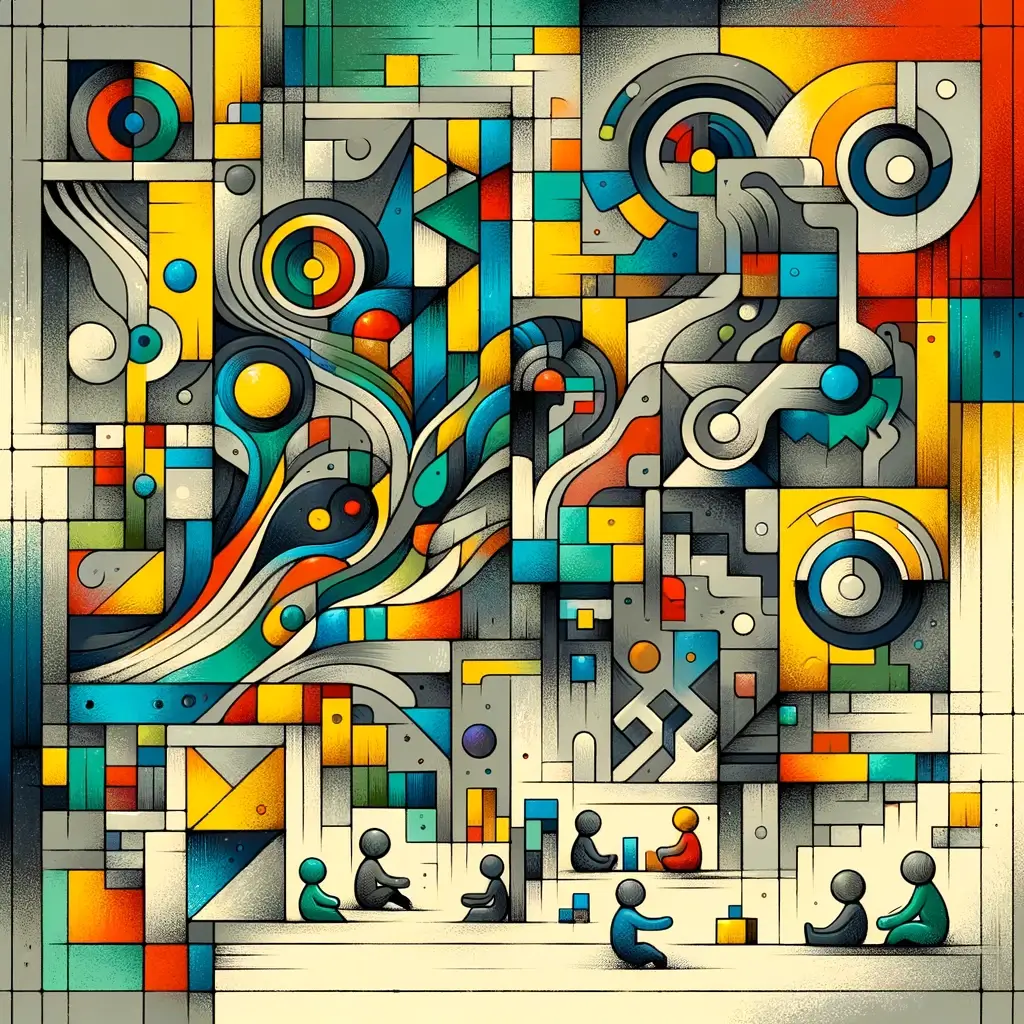
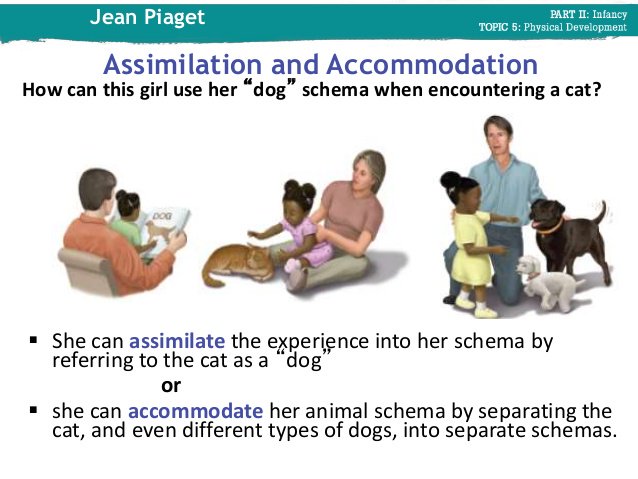
Teachers can use practical strategies to help students use both assimilation and accommodation. Block play and creative activities are great ways to do this.
Block play helps children build on what they already know about shapes and space. At the same time, it challenges them to try new structures. This mix of familiar and new pushes both processes.
Group work is another powerful tool. When children share ideas with each other, they often hear views that challenge their own thinking. This can lead to accommodation as they adjust their mental models.
Hands-on learning works well because it gives children real experiences to build on. When students can touch, move, and explore, they form stronger connections between new and existing knowledge.
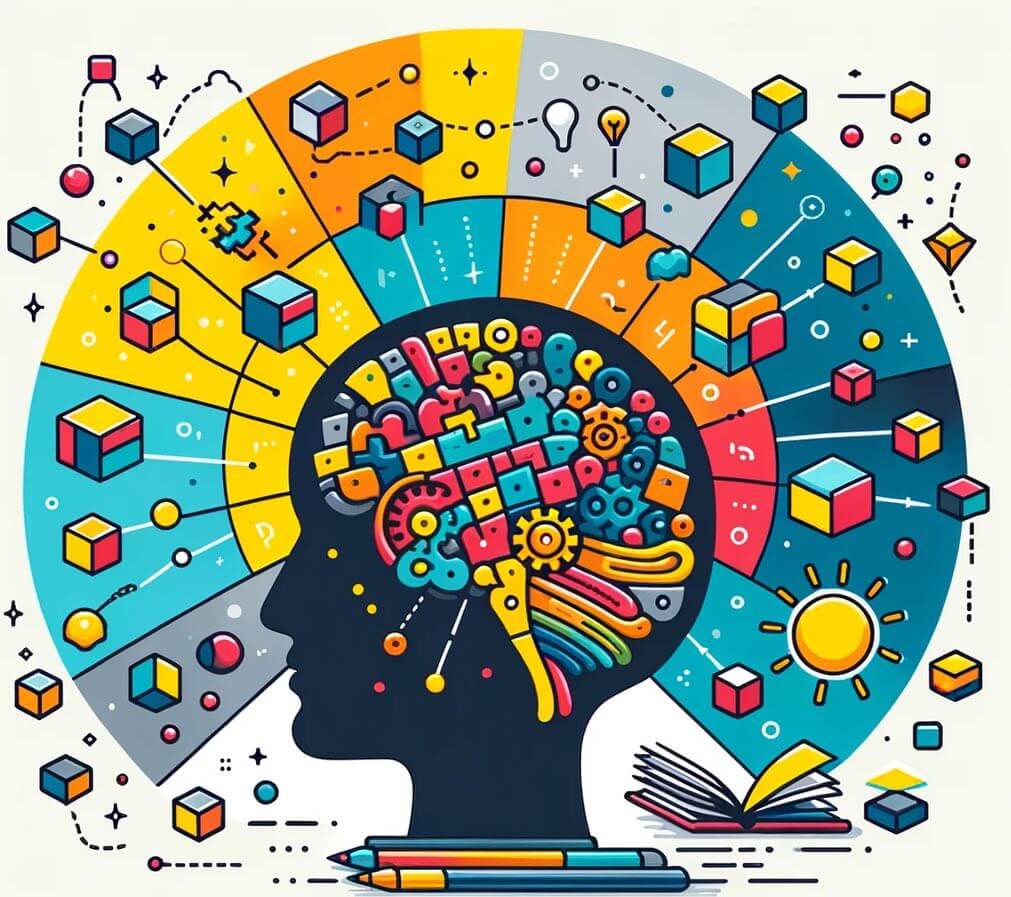
Here are examples of how assimilation and accommodation work in different subjects:
1. Language Arts (Year 2): A child learns that two words can join to make compound words. They adjust their thinking to understand that combined words create new meanings.
2. Maths (Year 5): A student learns that ½ and 2/4 are the same. They must accommodate when they discover that not all fractions work this way.
3. Science (Year 8): Students add the idea of food chains to what they know about animals. They accommodate when they learn about complex food webs that do not follow simple chains.
4. History (Year 10): A student fits a historical event into a timeline they know. They accommodate when they learn about cultural context that changes how they see that event.
5. PE (All ages): A child learns a new game by comparing it to one they know. They accommodate when new rules require different actions.
Teachers can guide these learning moments by providing experiences that stretch students' current thinking. This helps children grow and develop stronger understanding.
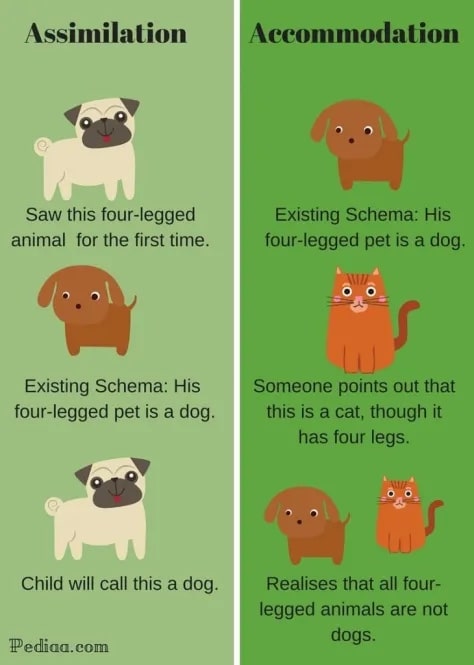
Every child learns differently. Teachers need to adapt their teaching to meet the assimilation and accommodation needs of all students.
Children with dyslexia or other learning differences may need extra support. Multisensory learning, which uses sight, sound, and touch together, can help these students take in new information more easily.
Cultural backgrounds also shape how children learn. Students bring different experiences and knowledge to the classroom. Teachers should value and build on this diversity.
By creating an inclusive classroom, teachers can help all children develop their thinking skills. This means giving every student the chance to both build on what they know and stretch into new ideas.


Here are five important studies on this topic:
1. Block (1982): Personality Development
This paper looks at how assimilation and accommodation connect to personality growth. It suggests that balancing these processes helps people manage stress and build strong ways of seeing the world.
2. Zhang Fen (2003): Modern Teaching
This study explores how teachers can match their methods to students' thinking patterns. It shows how understanding these processes can improve teaching.
3. Zhong, Songxiang & Lin (2015): Computer Models
These researchers built computer models that copy how humans learn through assimilation and accommodation. Their work helps us understand learning in new ways.
4. Renner, Abraham & Birnie (1986): Learning Physics
This study looked at how high school students learn physics. It found clear evidence of assimilation and accommodation happening as students grasped new concepts.
5. Mayer (1977): Instruction Sequencing
This research examined how the order of teaching affects learning. It showed that matching teaching to students' existing knowledge helps them learn more.
Together, these studies show how assimilation and accommodation shape learning. Teachers who understand these processes can create better learning experiences for their students.
Assimilation and accommodation are two key ideas from Jean Piaget's theory of how children learn. These two processes explain how we take in new information and make sense of the world around us.
Assimilation happens when we fit new information into what we already know. Think of it like adding a new book to an existing shelf. The new book fits in with what is already there.
Accommodation happens when we change what we already know to fit new information. This is like building a new shelf because the old one cannot hold the new book. We have to adjust our thinking.
Both processes work together to help us learn and grow. Understanding how they work can help teachers support child development in the classroom.
Assimilation is how we take in new information and connect it to our existing knowledge. When children learn something new that fits with what they already understand, they are using assimilation.
For example, a child who knows what a dog is might see a new breed and still call it a dog. They have fitted this new animal into their existing idea of what dogs look like.
This process helps us make sense of new experiences quickly. We use what we already know as a starting point. This makes learning faster because we do not have to start from scratch every time.
Assimilation helps children build on their existing schemas. A schema is a mental framework that helps us organise and understand information. The more we learn, the stronger our schemas become.

Accommodation is what happens when new information does not fit into our existing knowledge. We have to change our thinking to make room for new ideas.
For example, a child who thinks all four-legged animals are dogs might see a cat. When they learn it is not a dog, they must create a new category in their mind. This is accommodation.
Accommodation takes more effort than assimilation. It requires us to rethink what we thought we knew. But this process is key to learning complex ideas and correcting mistakes in our understanding.
Both assimilation and accommodation work together. As children grow, they constantly shift between these two processes. This helps them build more accurate and detailed mental models of the world.


Teachers can use practical strategies to help students use both assimilation and accommodation. Block play and creative activities are great ways to do this.
Block play helps children build on what they already know about shapes and space. At the same time, it challenges them to try new structures. This mix of familiar and new pushes both processes.
Group work is another powerful tool. When children share ideas with each other, they often hear views that challenge their own thinking. This can lead to accommodation as they adjust their mental models.
Hands-on learning works well because it gives children real experiences to build on. When students can touch, move, and explore, they form stronger connections between new and existing knowledge.

Here are examples of how assimilation and accommodation work in different subjects:
1. Language Arts (Year 2): A child learns that two words can join to make compound words. They adjust their thinking to understand that combined words create new meanings.
2. Maths (Year 5): A student learns that ½ and 2/4 are the same. They must accommodate when they discover that not all fractions work this way.
3. Science (Year 8): Students add the idea of food chains to what they know about animals. They accommodate when they learn about complex food webs that do not follow simple chains.
4. History (Year 10): A student fits a historical event into a timeline they know. They accommodate when they learn about cultural context that changes how they see that event.
5. PE (All ages): A child learns a new game by comparing it to one they know. They accommodate when new rules require different actions.
Teachers can guide these learning moments by providing experiences that stretch students' current thinking. This helps children grow and develop stronger understanding.

Every child learns differently. Teachers need to adapt their teaching to meet the assimilation and accommodation needs of all students.
Children with dyslexia or other learning differences may need extra support. Multisensory learning, which uses sight, sound, and touch together, can help these students take in new information more easily.
Cultural backgrounds also shape how children learn. Students bring different experiences and knowledge to the classroom. Teachers should value and build on this diversity.
By creating an inclusive classroom, teachers can help all children develop their thinking skills. This means giving every student the chance to both build on what they know and stretch into new ideas.


Here are five important studies on this topic:
1. Block (1982): Personality Development
This paper looks at how assimilation and accommodation connect to personality growth. It suggests that balancing these processes helps people manage stress and build strong ways of seeing the world.
2. Zhang Fen (2003): Modern Teaching
This study explores how teachers can match their methods to students' thinking patterns. It shows how understanding these processes can improve teaching.
3. Zhong, Songxiang & Lin (2015): Computer Models
These researchers built computer models that copy how humans learn through assimilation and accommodation. Their work helps us understand learning in new ways.
4. Renner, Abraham & Birnie (1986): Learning Physics
This study looked at how high school students learn physics. It found clear evidence of assimilation and accommodation happening as students grasped new concepts.
5. Mayer (1977): Instruction Sequencing
This research examined how the order of teaching affects learning. It showed that matching teaching to students' existing knowledge helps them learn more.
Together, these studies show how assimilation and accommodation shape learning. Teachers who understand these processes can create better learning experiences for their students.